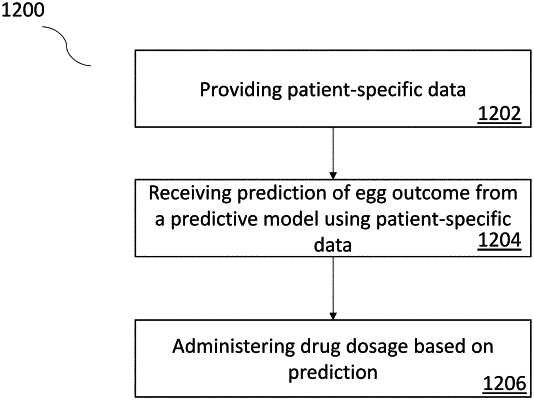| CPC G16H 20/10 (2018.01) [G16H 50/30 (2018.01); G16H 50/70 (2018.01)] | 30 Claims |

|
1. A method for optimizing an ovarian stimulation process, the method comprising:
predicting, by a processor, a first egg outcome for a first candidate hormonal trigger day and a second egg outcome for a second candidate hormonal trigger day for a patient based on one or more predictive models having received data associated with the patient, wherein the one or more predictive models are trained using data associated with a plurality of prior patients and provide the first and second predicted egg outcomes, and wherein each of the first and the second predicted egg outcomes comprises one or more of: number of eggs retrieved, number of mature eggs, maturity yield, number of post-mature eggs, number of fertilized eggs, number of embryos, number of blastocysts, number of usable blastocysts, and number of euploid blastocysts; and
administering a hormonal trigger injection configured to cause follicle maturation in the patient on the first candidate hormonal trigger day or on the second candidate hormonal trigger day based on the first and the second predicted egg outcomes.
|